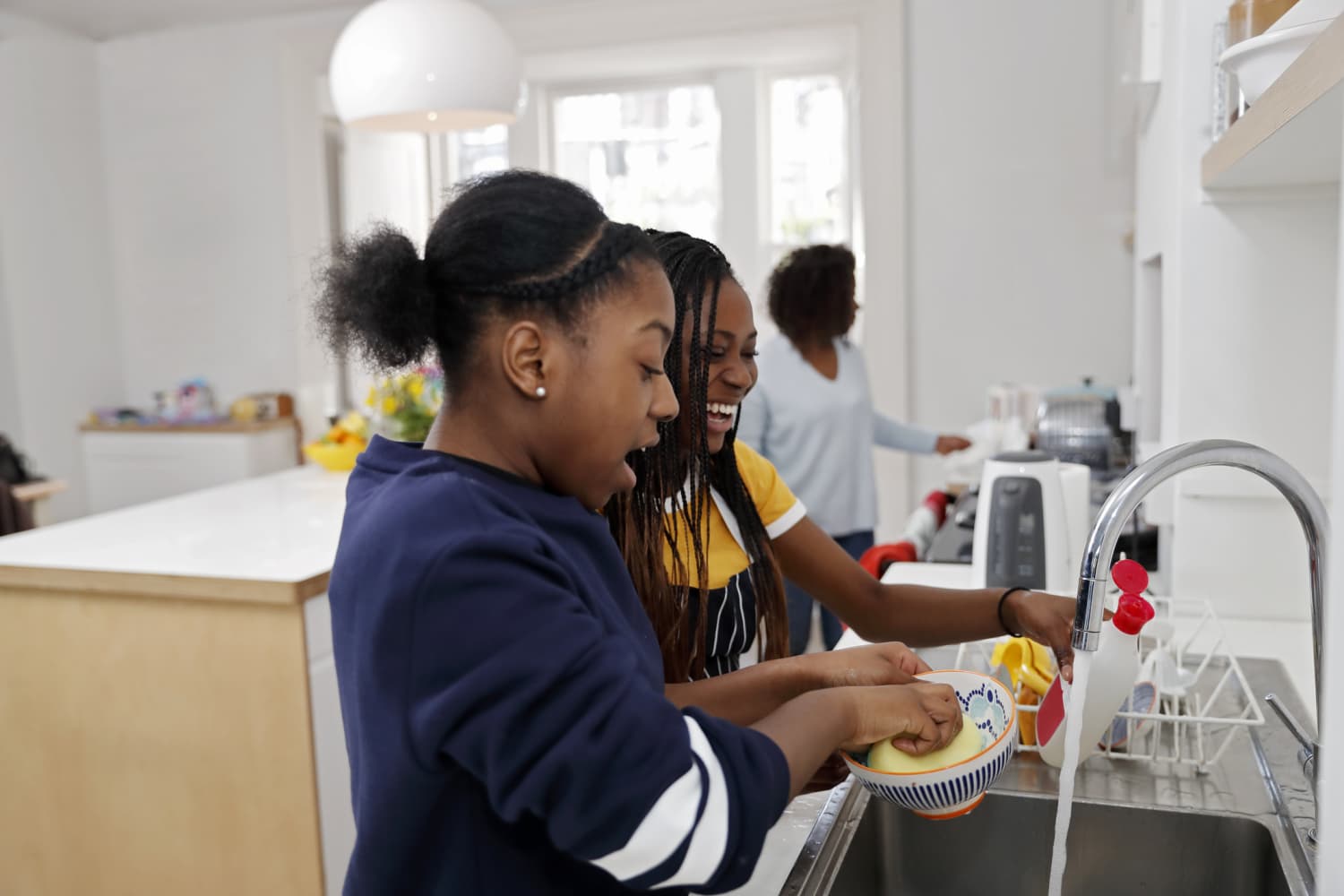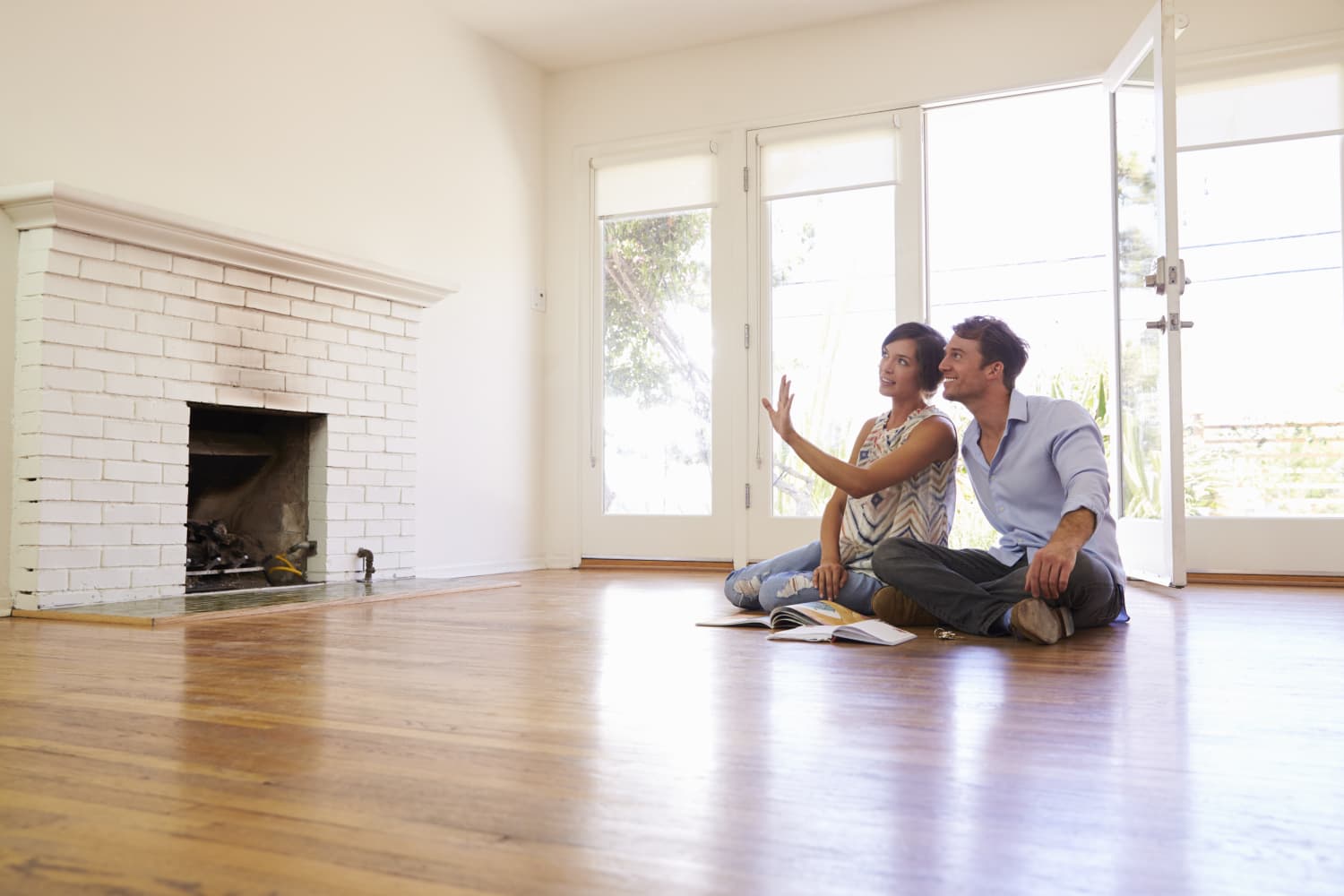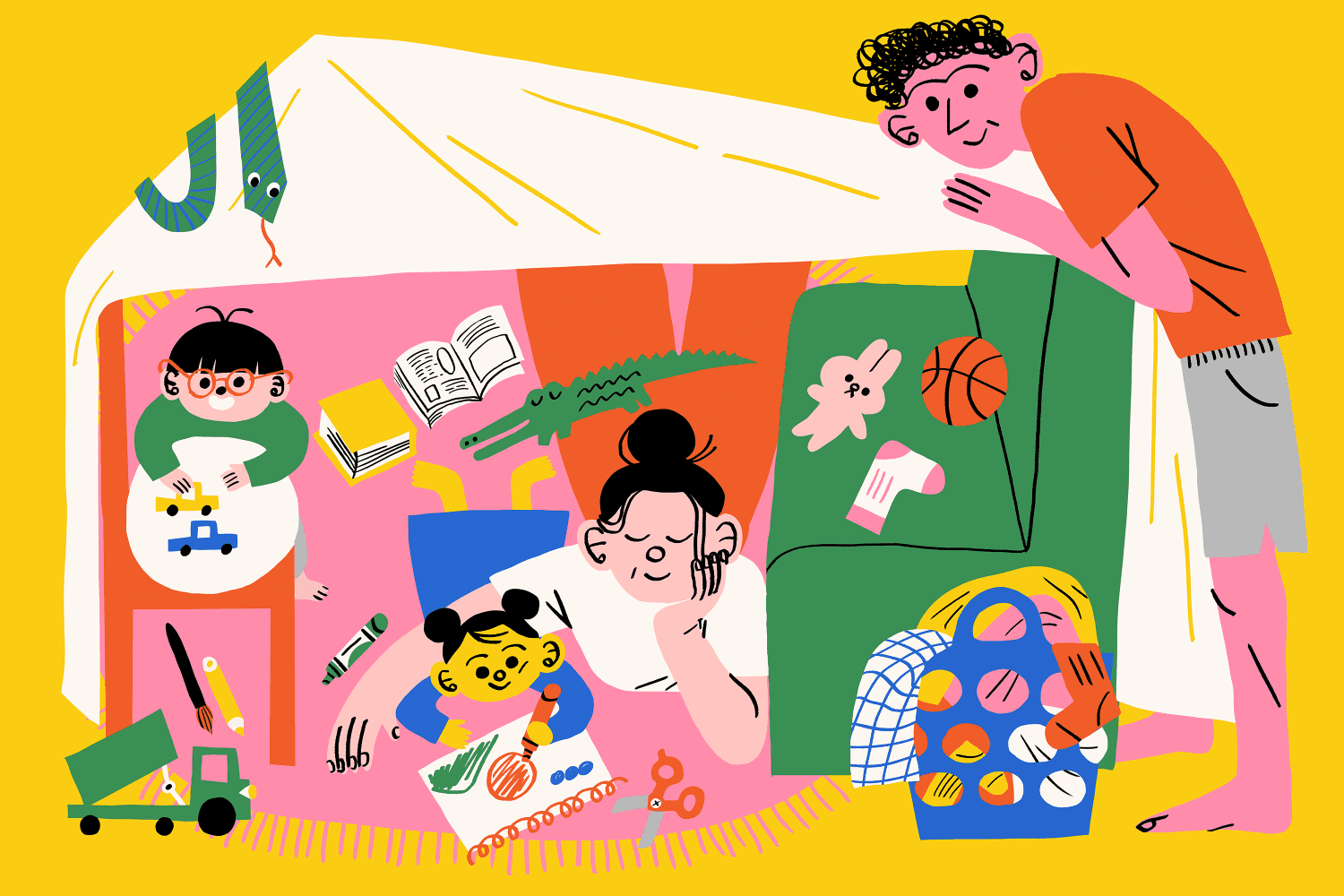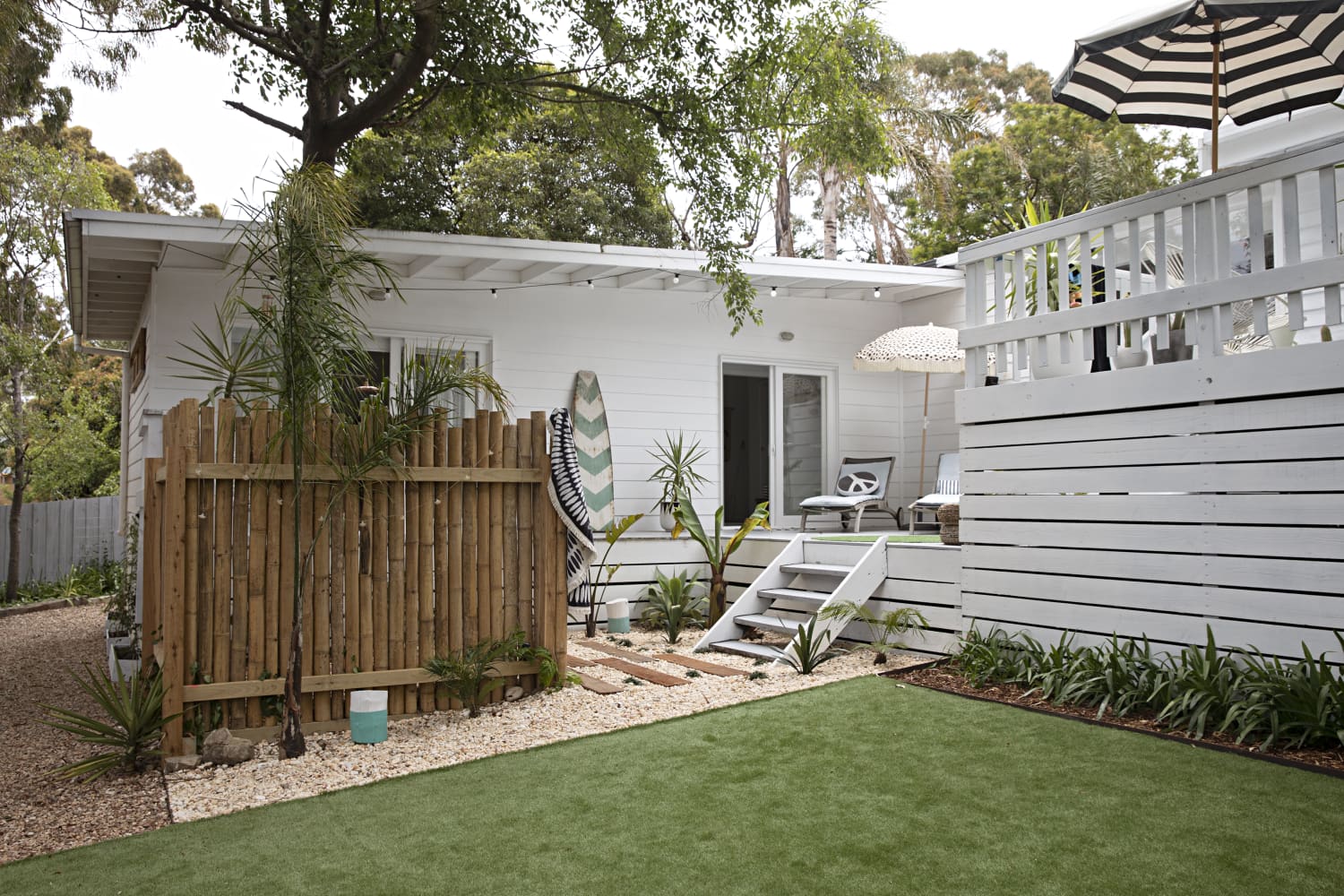
by Furnishly | Jan 21, 2022 | Design Inspiration, Style
We independently select these products—if you buy from one of our links, we may earn a commission.
When you talk to someone about Valentine’s Day, odds are they fall into one of two camps. They either love Valentine’s Day, or they think it’s all a marketing ploy to create an occasion for people to spend more money. No matter which group of thought you identify with more, odds are that if you’re seeing someone special, you’re probably going to want to pick up a little something for your partner leading up to February 14.
This doesn’t mean you have to book a vacation or buy expensive jewelry or clothing for your partner, though. Sometimes the best Valentine’s Day gifts are the simplest ones — like a handwritten note, personalized trinket, or special dinner reservation. If you have a small budget and want to treat your partner to something special this holiday, here are 30 Valentine’s Day gifts they’re sure to love, all for under $30.
Sarah M. Vazquez also contributed to reporting.
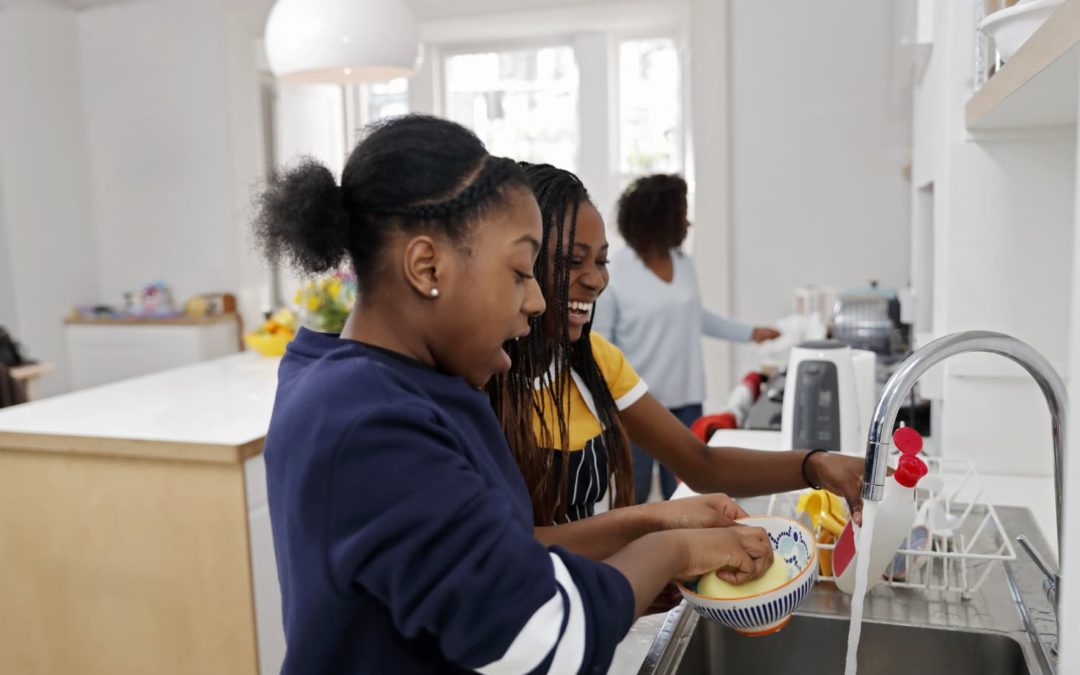
by Furnishly | Nov 16, 2021 | Design Inspiration, Style
Ashley Abramson
Contributor
Ashley Abramson is a writer-mom hybrid in Minneapolis, MN. Her work, mostly focused on health, psychology, and parenting, has been featured in the Washington Post, New York Times, Allure, and more. She lives in the Minneapolis suburbs with her husband and two young sons.
Follow Ashley

by Furnishly | Aug 18, 2021 | Design Inspiration, Style
I had been dating my boyfriend for about six months when I’d finally saved up enough money for a down payment. And though I could picture us eventually moving in together, we weren’t ready to make the financial — or relationship — commitment of buying a house together.
So, when I started seriously looking at houses, I invited him to offer his input, but we both understood that I’d make the final decision all on my own. I ended up buying a cute, little three-bedroom house and, about a year later, my boyfriend moved in.
The timelines for buying a house and dating don’t always line up perfectly (especially since saving for a down payment and finding “the one” can both take years!). Couples buy houses together all the time, but there are also lots of situations in which it makes sense for one partner to buy the house solo — and then have the other partner move in. Maybe you’re just not there yet in the relationship. Maybe one partner has bad credit. Maybe one partner had already been saving for a down payment.
But what does this type of arrangement actually look like in real life? And how can couples set themselves up for success?
Perhaps unsurprisingly, the trick to buying a house without putting your partner on the deed isn’t really a trick at all — it’s the same relationship advice you’ve likely heard 1,000 times before: Talk to each other.
“Communication is key,” says Lauren Kolazas, a real estate agent in Virginia. “Even though it may seem obvious or uncomfortable to talk about, communicating about all aspects of your potential living situation is incredibly important. Who will be responsible for which expenses? Who has decision-making power when it comes to updates or changes that are made to the property? What will happen if things don’t work out?”
How you navigate these specific questions is up to you and your partner. Some people take a casual approach to moving in together, while others draw up a formal agreement or lease that both partners sign. Some couples divide living expenses based on their respective salaries or their stake in the home, while others might split bills right down the middle.
“There is no one-size-fits-all way to approach buying a home and having your significant other move in with you,” says Khari Washington, a real estate broker in Southern California. “This looks different for each couple.”
In addition to having transparent conversations about money and responsibilities, it’s equally as important to ensure that everyone feels at home in the space.
This can be a little tricky to navigate, since the house-owning partner has more of a vested interest in the property than the non-owning partner. Still, depending on the seriousness of your relationship, it can be helpful to find a middle ground when it comes to paint colors, landscaping choices, and other decisions that could not only affect the home’s ROI but also the non-owning partner’s daily living experience.
“Just because you own it doesn’t mean you have all the power,” Washington says. “Maybe it isn’t their equity, but it is their home too.”
Also, it sounds obvious, but before one partner buys the house and the other moves in, be up front and honest about your relationship status and long-term goals. Buying a house is a big life decision in its own right, but this transitional moment may also be a good time to reflect on and evaluate your relationship, too.
“If you are bringing someone house-hunting with you and you plan to live there together, then I think you should consider their feedback,” Kolazas says. “If you don’t plan to be with the person long-term or don’t want their feedback, then perhaps bringing them house-hunting with you or living together isn’t wise.”
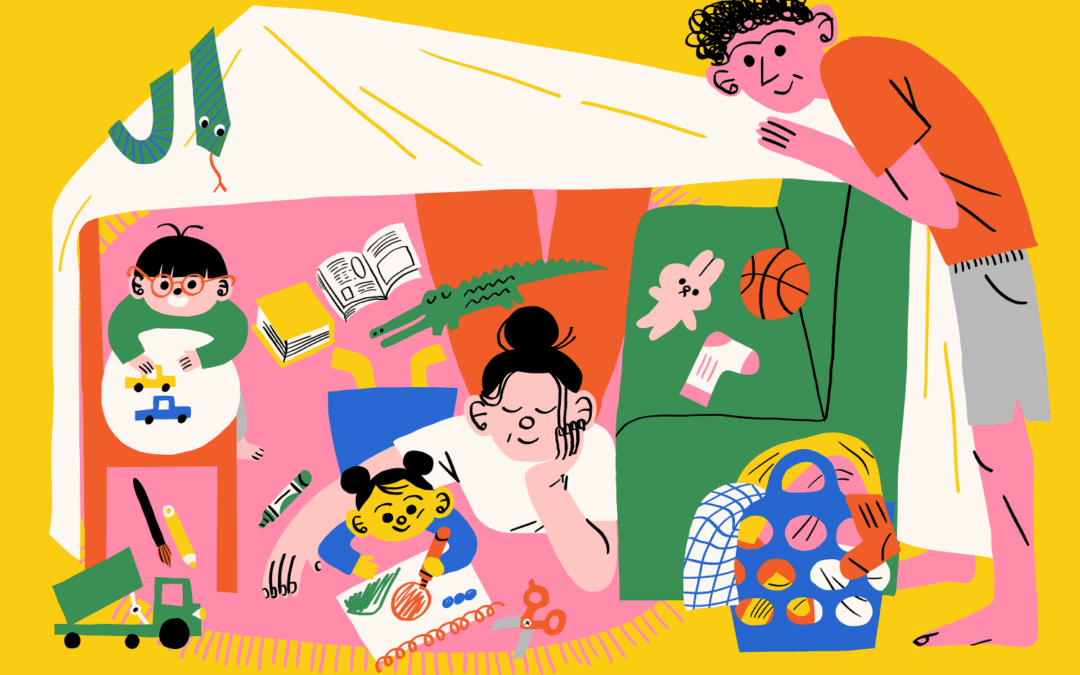
by Furnishly | Jun 24, 2021 | Design Inspiration, Style
It happens each evening: I walk through a doorway and inevitably trip over something that belongs to one of the little humans I just tucked into bed. Be it LEGOs, dirty socks, pacifiers, or a half-open book, the feeling is always the same. The volcano of parenting failures that’s been bubbling since dawn suddenly erupts like flaming lava. I’m filled with an anxiety I can’t name.
I spend most days juggling three kids, a full-time job, a marriage, personal fulfillment — all amidst a pandemic — yet, clutter is the thing that breaks me. Sure, one day when my kids are grown I’ll likely miss the plastic menagerie that greets my feet each day, but that day is not today. In every corner of my home lies a reminder that I am not enough: Toys strewn about every living space, piles of laundry in all areas of the house, and a constant parade of crumbs that lead you from room to room like Hansel and Gretel marking their path back home.
A quick scroll of my Instagram newsfeed seals the deal: Other parents can raise kids and keep their homes clean. They can have well-designed adult spaces with nary a toy in sight.
What am I doing wrong? I know I’m not the only one who feels this way.
“After spending a year home, my mental health took a toll on me,” says Brooke Melrose, mom of three in Medina, Ohio. “I have 3 kids, a dog and husband who have all been here since the shutdown. I can’t do it all, all of the time,” she says.
Clutter, as it turns out, isn’t just about stuff.
What’s behind our emotional response to clutter?
I talked to psychotherapist and parenting coach Ana Sokolovic, MS, who says, “[Clutter] often has a meaning we attach to it. For parents, clutter can be a mirror for all the insecurities we harbor. It reminds them of the overall mental clutter they need to organize as they manage multiple roles and responsibilities.”
Throw in social media comparison, and home clutter can quickly deflate even the most positive parent’s spirit.
“Due to social media, culture of neutral colors, impeccable kitchens, and [perfectly organized] Montessori toys, mothers carry stress to emulate the standards brought forth by bloggers and Pinterest,” explains Dr. Sandra Espinoza, PsyD. “There is this idea that you have it ‘all together’ if you [can maintain] a minimalistic aesthetic in your home,” she continues.
Dr. David Lewis, a UK-based psychologist, has coined a term for this phenomenon: Home Dysmorphic Disorder. The concept, he says, “starts with discontent about one, often minor, feature — such as an ornament, picture, or item of furniture. It then quickly spreads, like an oil slick, to trigger unhappiness with the whole room or even the entire house.”
Our homes are places of security, safety, and comfort. The way we decorate and live in them can be a reflection of ourselves and an extension of our self-image. This is all challenged, Dr. Lewis explains, as we are exposed to the choices and homes of others. Clutter is no longer hidden behind your walls, in a sense.
A home is a place that a person should experience as a refuge, a safe haven from the world,” Dr. Espinoza says. “We are seeing women [especially] who cannot experience their home as a safe place; instead, they experience it as a place of defeat.”
What happens next is familiar to most of us: burnout. Impatience and frustration directed at your kids. Outbursts like, “No, I can’t play, I have to clean!” I’d be lying if I said I wasn’t guilty of it all. “It’s fairly common for parents to think, ‘I’d love to play with my kids or go for a walk with my family, but there’s just this huge mess,’” notes mental health therapist Billy Roberts, LISW-S, “and this line of thinking can lead to action paralysis.”
“When I first became a parent, I spent tons of time per day cleaning,” Juliana Parker, M.S. APCC, associate therapist and mom of three, tells me. “My house looked clean, but I was stressed out, tired, and felt like I wasn’t enjoying my time with my kiddos because I was too focused on how my house looked. [I had to learn to] gently and slowly release the expectations that everything has to be perfect.”
In the past year especially, we’ve had to face down a lot of the ideals we held for ourselves and our lives in favor of survival. If I could count the times I’ve closed my eyes amidst the commotion of children playing and silently thanked the universe for the safety of our home and the health of my family, it would be in the hundreds. So why am I prioritizing presence with my family and a clean home equally, when one thing is infinitely more important to me?
Now, I’m done apologizing for clutter. I’m done trying to make my house look as if children don’t live here, too. I’m done feeling inadequate when, in fact, I am thriving and raising children who are doing the same.
Parents can refocus some of their energy on their own self-care, which can also involve their children, Roberts tells me. “Going for walks, baking cookies, laughter, can all come before decluttering the cabinets. In fact,” he says, “focusing on self-care will almost assuredly improve productivity around household tasks through re-energizing a parent’s mind and heart.”
Melrose says, “I remember [my mom’s] stress about cleanliness. I remember her cleaning and vacuuming constantly. So maybe subconsciously I want to be the opposite. And I’m OK with it.”
A few years into my parenting journey, I gave up on staying on top of laundry. “I wish I was a person who can stay up to date with laundry, but I’m not,” I told myself. I wasn’t failing at something, I was choosing to prioritize something else.
Accept — and maybe even appreciate — this life stage.
As a culture, we seem to obsess over having our houses look like children don’t live there. The problem with that is, of course, that children live there. And as little humans with their own needs and wants, they come with their share of stuff. This is a season of life.
“My girl’s playroom is in a constant state of chaos… to me,” says Jo Anna Albiar, mom of one in Lubbock, Texas. “I see a mess. But when I get in there to clean, when I get down on the floor and see the little worlds she has created, I stop myself. It makes me so happy to see my 5-year-old do science experiments, run through a rain puddle without shoes, leave swimsuits scattered. I want her to know this is her home. ”
Recognizing my children as their own beings is one of the hardest and most important mindset shifts I am making. My need for a clean, tidy home is not more important than their desire to play; but both things can exist together with cooperation and compromise. For me, that means mitigating my desires for clean floors by designating “dump baskets” in each room — at the end of the day, everything on the floor gets dumped into a basket. I can breathe a little easier, and my kids can still be (ahem, messy) kids.
It also means that I work hard to have my kids understand that we all care for the home. Even kids can have simple responsibilities — whether it’s helping with laundry, cleaning toys, or wiping down counters. Adding onus onto their plates takes some off mine and begins to teach life skills like self-sufficiency and teamwork.
“To embrace clutter, we must change our perception,” explains Sokolovic. Instead of viewing clutter in a purely negative light, she tells us, we need to see it as a reflection of our current priorities. She notes “It’s an opportunity to smile at the chaos with gratitude that the family is healthy enough to make a mess.”
Clutter in my home is a privilege. To have a house filled with books, art supplies, and plenty of food is something I’ve always dreamed of. The disasters of each day can be tiny morsels of recognition if I choose to look at them like this: “You are doing a good job. You are giving them a life full of love and learning.”
The truth is that my life — and the lives of the families I interviewed — are not failures, regardless of how cluttered our homes may be. My kids are happy and inquisitive and safe. They have a mom who likes to bake and paint and sit in the grass with them. She makes a lot of mistakes and she doesn’t know what she’s doing most of the time, but she’s always there.
My home is often a mess. I am not.
Want more? Sign up here for a weekly splash of fun and good ideas for families with kids.
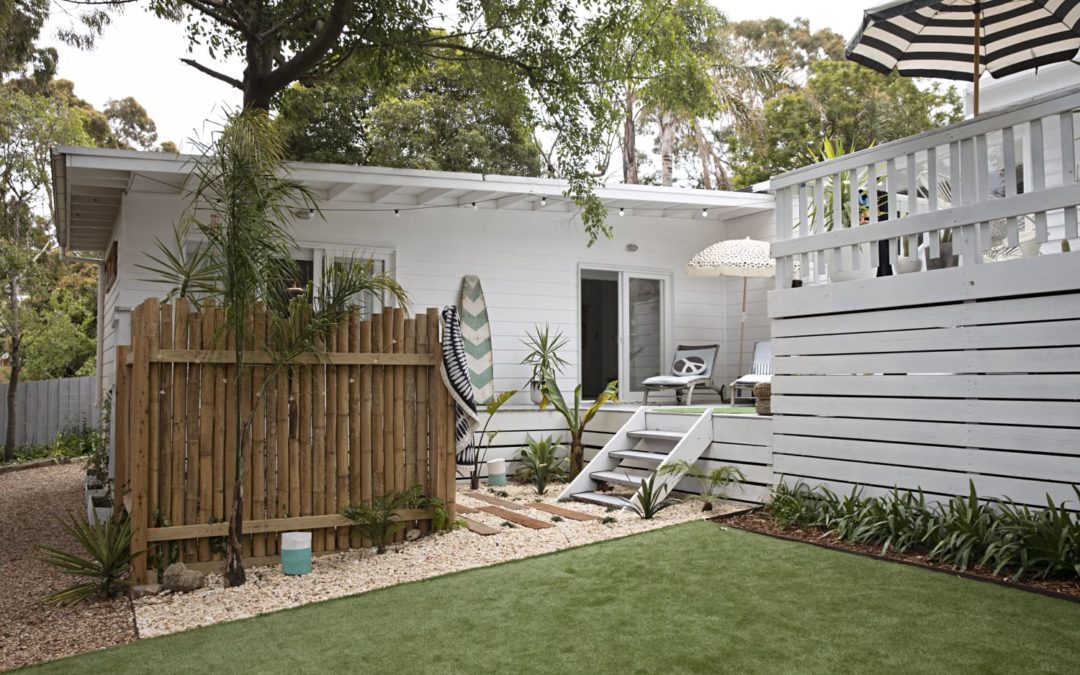
by Furnishly | Jun 18, 2021 | Design Inspiration, Style
Shifrah Combiths
Contributor
With five children, Shifrah is learning a thing or two about how to keep a fairly organized and pretty clean house with a grateful heart in a way that leaves plenty of time for the people who matter most. Shifrah grew up in San Francisco, but has come to appreciate smaller town life in Tallahassee, Florida, which she now calls home. She’s been writing professionally for twenty years and she loves lifestyle photography, memory keeping, gardening, reading, and going to the beach with her husband and children.




